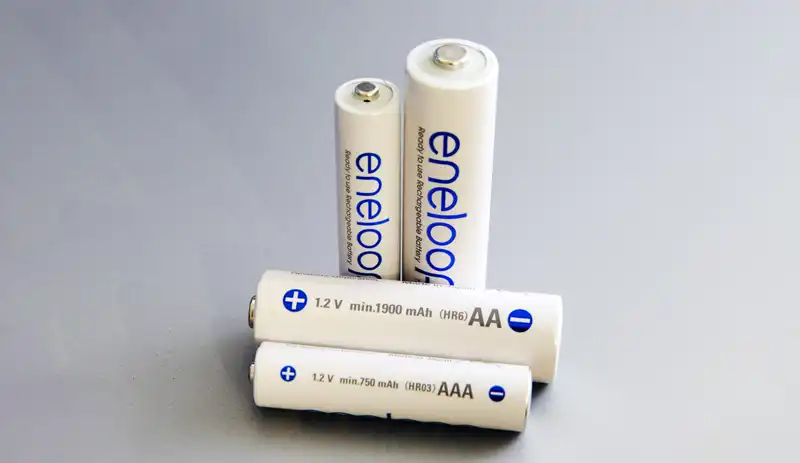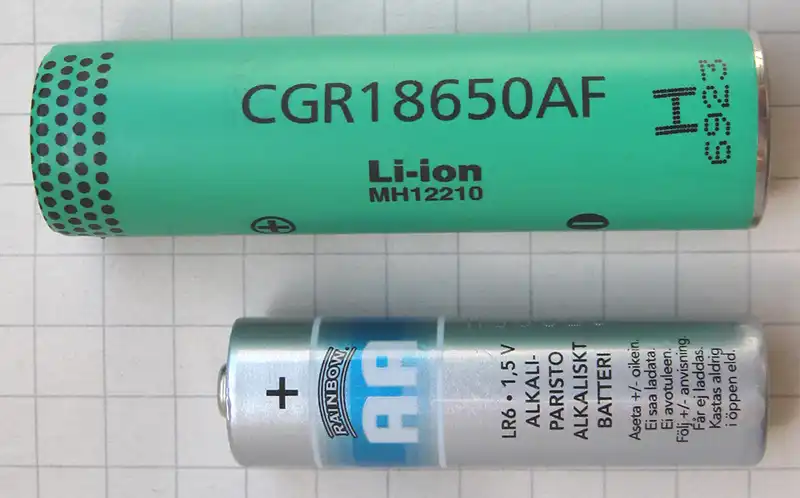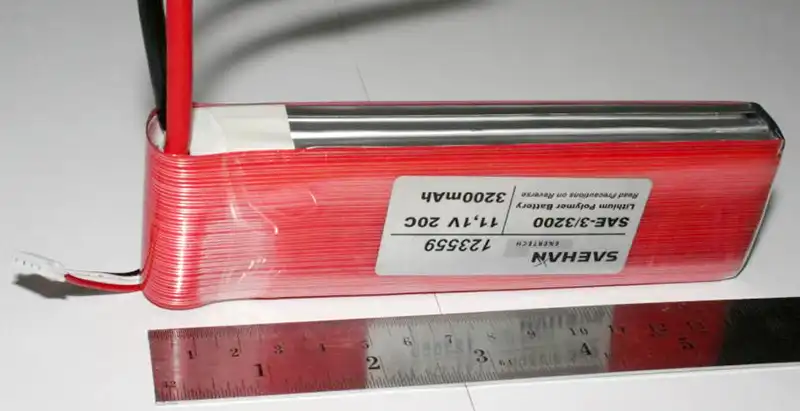You can also be interested in these:
- Is it harmful for your laptop to use it plugged into the electrical outlet?
- Benefits of venturing the battery reconditioning business
- Environmental impact of the battery reconditioning business
- Household uses for the EZ Battery Reconditioning Program
Lithium batteries have become the standard in new mobile, portable devices and even other devices such as robots, vacuum cleaners, cordless tools, etc. However, they are not the only batteries available and nickel batteries are also quite popular, though relegated to other types of devices.

In this article, I will show you everything you need to know about these rechargeable batteries or cells, the differences, and their most notable advantages and disadvantages.
History of Rechargeable Batteries
The first rechargeable battery in history was a lead-acid battery, also known as a secondary cell or accumulator. This type of battery is still present in many current vehicles. It was developed in France in the mid-19th century. Before that, all batteries were primary cells, meaning they could not be recharged.
In 1899, Waldemar Jungner in Sweden invented the nickel-cadmium battery (NiCd), which used cadmium as the positive electrode (cathode) and nickel as the negative electrode (anode). This type of battery or cell also became popular, although its high price compared to lead limited its expansion to certain areas.
Later, in 1990, European environmentalists began to be concerned about the damage caused by NiCd batteries to the environment, so they would eventually be restricted in the European Union under the 2006/66/EC Battery Directive. Currently, they can only be found for industrial use, but do not have a sufficiently good alternative.
An alternative for this type of rechargeable batteries also emerged with nickel, but this time in the form of NiMH (nickel-metal hydride). This type of battery is more environmentally friendly but with similar characteristics to NiCd. That’s why they have spread as one of the most used batteries in all kinds of everyday devices: watches, flashlights, remote controls, scales, some wireless peripherals, etc.
Currently, since lithium batteries were first introduced in 1991 by Sony, most efforts focus on improving the capacity and energy density that can be stored in this type of battery, as well as optimizing other characteristics such as extending the lifespan, making it more environmentally friendly, obtaining faster charges, etc. Lithium has great advantages, which is why it is the current king of mobile devices, robots, portable devices, electric vehicles, digital cameras, wireless tools, etc.
The market for battery-powered devices is huge and growing. As a result, the battery business has become one of the most profitable today. Additionally, companies’ marketing departments are selling it as ECO or respectful, despite the challenge of producing and recycling batteries.
Characteristics of Rechargeable Battery
When choosing a new battery for a device, you should be aware of some of the most important features you should look for:
- Battery type: there are many types and formats of batteries you should keep in mind, as it may not be compatible with the device otherwise. For example, there are alkaline batteries, button batteries, etc.
- Voltage: it is the voltage that the battery is capable of supplying. Although it can then be rectified through additional circuits, it is also important depending on what you are going to use it for.
- Discharge rate curve: it is a graph of voltage as a function of the percentage of capacity discharged. A flat discharge rate curve would be optimal because it means that the voltage remains constant as the battery wears out. That is, from 100% to 0% it would give a stable voltage.
- Capacity: it is the amount of electrical energy involved in an electrochemical reaction. It can be measured in different units, such as Whr or watt-hours that it is capable of giving, or also in mAh or milliampere hours. For example, a 3000 mAh battery is capable of giving 3 A for an hour or 1.5 A for two hours, and so on…
- Energy density: specific is the energy that can be obtained per unit of mass of the cell (or sometimes per unit of mass of active electrode material). It is the product of the specific capacity and the operating voltage during a complete discharge cycle. The higher, the better, because you will have more energy with the same weight.
- Power density: is the power that can be obtained per unit of mass of the cell and is measured in W/kg or watts per kilogram. That is, for each kilogram of battery, how many watts of power can it provide.
- Temperature dependence: the reaction rate in the cell depends on temperature according to kinetic theories. The internal resistance also varies with temperature; low temperatures produce a higher internal resistance. At very low temperatures, the electrolyte may freeze and provide a lower voltage, because the movement of ions is prevented. At very high temperatures, chemicals can decompose or there may be enough energy available to activate unwanted reversible reactions, reducing efficiency.
- Lifespan: Another very important factor, as it will determine how long the battery will last. The lifespan of a rechargeable battery is defined as the number of charge/discharge cycles a secondary cell can complete before its capacity drops to 80% of its original value. This varies greatly depending on the type of battery (lithium, nickel, etc.). Some can last for thousands of cycles before gradually losing capacity.
- Deep discharge capacity: There is a logarithmic dependence between the depth of discharge and the lifespan of the battery, so the lifespan of the battery can increase significantly if the battery is not fully discharged; for example, if you keep the battery between 40% and 80% charged, it will last longer than if it is completely discharged or at higher values.
Nickel-Metal Hydride Rechargeable Batteries (NiMH)
For nearly half a century, devices that needed a battery almost exclusively used nickel-cadmium rechargeable batteries (NiCd). However, after their restriction in the 90s due to environmental concerns, nickel-metal hydride (NiMH) batteries, which we are all familiar with today, began to become popular.
This type of battery differs from lithium batteries in that the cells have a nickel structure similar to NiCd, and they usually come in button, cylindrical, prismatic or rectangular cases. They are the most common batteries in all kinds of everyday objects that run on them, from a flashlight, to a watch, to a remote control toy.
Advantages
The advantages of NiMH batteries are:
- They can have a higher density than NiCd, meaning up to a 30-40% higher charge.
- They are not as prone to memory effect as NiCd.
- Easy to store and transport. Not subject to any control.
- Environmentally friendly, contains only non-toxic chemicals like cadmium was (heavy metal).
- The nickel content makes recycling feasible.
Disadvantages
The most notable disadvantages are:
- Limited lifespan. Its capacity will be limited after a deep discharge.
- Requires a complex charging algorithm.
- Does not tolerate overcharging well. So it is not good to leave them charging for more than the estimated time.
- Generates heat during charging.
- High self-discharge when not in use.
- Efficiency decreases if the battery is stored at higher temperatures. It should be charged to 40% stored in a cool place.
Lithium-Ion (Li-Ion) Rechargeable Batteries
John B. Goodenough invented the Lithium-Cobalt Oxide cells in 1922. However, a few years prior to that, Sony had already announced that it had an international patent on the Lithium and Cobalt Oxide cathode. After years of litigation to obtain the patent, Sony won the legal battle and has become the most important battery today.

These Lithium batteries have a higher energy density, allowing them to store more charge in the same space, which is a huge advantage. The cells can have a voltage of up to 3.6V and improved active materials and electrolytes can further increase the density of these batteries.
Not only that, the charging characteristics are also very good, the discharge rate curve is fairly flat from 3.7-2.8V/cell and they hardly suffer from memory effect. As for their production cost, they have been decreasing exponentially as technology has improved. For example, in 1994, the 18650 batteries could cost up to $10 each for capacities of 1100 mAh. By 2001, capacities of 1900 mAh had been achieved with production costs below $3 and this has continued to this day.
It should also be noted that Lithium batteries require very little maintenance, which is a great advantage over others like lead batteries. You will also not have to worry about deliberate complete discharge, as it is not necessary. And the self-discharge rate is even less than half that of nickel-based batteries, which is positive.
The nominal cell voltage of 3.60V can directly power digital devices such as laptops, mobile devices, etc. The disadvantages include the need for protection circuits to avoid possible spontaneous ignition or explosion. An additional disadvantage is the high cost.
Lithium-ion battery types are classified based on the electrochemical systems used in them:
- (+) MLi / organic electrolyte / C (-), where the letter M indicates the base metal of the electrode
- C – cobalt
- N – nickel
- M – manganese
- V – vanadium
- T – titanium
Lithium-ion batteries have hermetic housings that contain protection control circuits. The electrode materials are applied to very thin films (copper and aluminum), divided by a separator.
Advantages of Lithium (Li-Ion) batteries
The main advantages of lithium batteries are:
- High density
- Low self-discharge rate, less than half of NiCd and NiMH
- Not affected by the memory effect
- Little maintenance
- No periodic discharge required.
Disadvantages of a Lithium (Li-ion) battery
On the other hand, the disadvantages of lithium-ion batteries are:
- Requires a protection circuit to limit voltage and current
- Degrades and has a limited lifespan, similar to other chemicals
- Strict transport regulations apply for this type of battery due to the risk of ignition or explosion when reacting with air oxygen.
Li-Polymer Battery (Li-Po)

The first Li-polymer batteries were developed in the early 21st century and became popular as an alternative to Li-Ion batteries, though there are still more Li-Ion batteries in the market than Li-Po. Nonetheless, Li-Po batteries have advantages over Li-Ion, but also have some limitations.
The batteries differ in the type of electrolyte used, which is a lithium polymer. It was first developed in the 1970s to create a solid, dry electrolyte like plastic. This enables ionic exchange and replaces the saturated electrolyte porous separator of Li-Ion batteries, making them less dangerous in case of spillage.
The solid polymer has low conductivity at room temperature and the battery must be heated to 50-60°C (122-140°F) to allow current flow, which is not the case with Li-Ion batteries. To make a modern Li-polymer cell conduct electricity at room temperature, the electrolyte gels. In other words, current Li-Po batteries are not actually polymers, but gels.
Li-polymer can be built in different ways, such as:
- Li-cobalt
- NMC
- Li-phosphate
- Li-manganese
Because of this, the Li-polymer battery is not considered special compared to the lithium-ion battery. Most secondary Li-polymer cells for the consumer market are based on cobalt-lithium circuits. From the user’s perspective, a Li-polymer is essentially the same as a lithium-ion battery. Both systems use identical anode and cathode materials and contain a similar amount of electrolyte.
Although the characteristics and efficiency of both systems are similar, the Li-polymer is special because it is a microporous electrolyte and replaces the traditional porous separator. The gelled electrolyte becomes a catalyst that improves electrical conductivity. The Li-polymer offers slightly higher specific energy and batteries using it can be thinner than conventional lithium-ion cells.
However, in exchange for these advantages, production cost can be 10-30% higher compared to Li-Ion batteries. That’s why they are not commonly seen in most devices, which prefer to continue using Li-Ion. They are only common in some premium models where price is not an issue.
While a standard lithium-ion battery requires a rigid casing to compress the electrodes, the Li-polymer uses laminated sheets that do not require compression. Such an aluminum casing reduces weight by more than 20%, and the thin film technology makes the format design free and the battery can be manufactured in any shape.
Finally, the charging and discharging characteristics of the lithium polymer are identical to those of other lithium-ion systems and do not require a special charger. The safety aspects are also similar.
More stories like this
- Is it harmful for your laptop to use it plugged into the electrical outlet?
- Benefits of venturing the battery reconditioning business
- Environmental impact of the battery reconditioning business
- Household uses for the EZ Battery Reconditioning Program
- Cold vs hot crypto wallets: What to choose?
- What is the most private browser?
